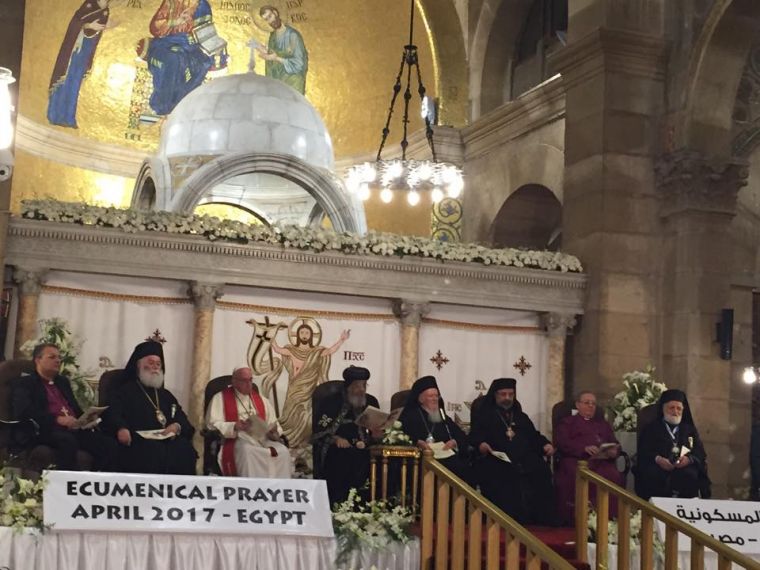The Pope's Egypt visit shows what persecution is doing for the Church
As Christians face an increase in violence around the world and especially in the Middle East, there are significant signs that the major Churches are coming together, with the blood of martyrs acting as the 'seed of unity'.
Perhaps the most striking of these signs in recent years came at the weekend during Pope Francis's visit to Egypt, when he and the Coptic Orthodox Pope Tawadros II took the major ecumenical step of making a declaration on common baptism.

agreement, which mean Oriental Copts and Catholics will recognise each other's baptisms, was praised by the World Council of Churches (WCC), as a 'sign of hope'.
The joint statement on April 28 also commits the Churches to working towards a shared formulation of the Lord's Prayer and reiterates the long-pursued desire for a common date for the celebration of Easter.
The declaration, which was signed during Pope Francis's visit to the Orthodox Saint Mark's Coptic Cathedral in Cairo, said: 'Today we, Pope Francis and Pope Tawadros II, in order to please the heart of the Lord Jesus, as well as that of our sons and daughters in the faith, mutually declare that we, with one mind and heart, will seek sincerely not to repeat the baptism that has been administered in either of our Churches.'
The Pope's trip has been praised as morale boosting for Egyptians in the wake of the Palm Sunday attacks on churches in Alexandria and Tanta which killed dozens and injured many more.
But it is the joint declaration on baptism that is being singled out as the historic highlight when it comes to ecumenical relations, and to the dream of Christian unity.
'The Pope's visit for Catholics in Egypt was a great happening, very positive,' Jesuit Father Samir Khalil Samir, a noted Egyptian Catholic theologian and Islamic studies scholar, told the Catholic News Service.
The professor, who teaches at the Pontifical Oriental Institute in Rome and St Joseph's University in Beirut, said the baptism agreement was even more important.
'This was a big step,' said Samir. 'In Egypt, there are a lot of mixed marriages between Catholics and Orthodox,' Fr Samir explained, pointing to the previous Coptic Orthodox requirement that new members joining the Church, including those who had previously been baptised as Catholic, had to be baptised again. 'This was very unhappy,' he explained.
'In general, the ecumenical relations with the Coptic Orthodox Church made very good steps and can go further,' Samir predicted.
Observers have pointed out the symbolism of the image of Pope Francis sitting alongside Tawadros II and the Patriarch of Constantinople Bartholomew I, praying together in the Church of St. Peter and paying tribute to the 29 martyrs who died last December during separate attacks on Coptic churches in Cairo.
In their joint declaration, Francis and Tawadros II used the term 'ecumenism of martyrdom,' wishing that the blood of martyrs could become 'the seed of unity among the disciples of Christ'.
In an article entitled 'Why did the Pope go to Egypt?', the website Aleteia said: 'On this basis, which is completely aligned with Early Christian tradition since Tertullian (the blood of the martyrs has always been considered the seed of Christianity), it is quite possible this papal journey, much more than others, has sowed a token of extremely powerful unity. Especially, since the Copts constitute the first Christian minority in order of importance in the Middle East and Northern Africa.'
As the two Popes say in the conclusion of their joint agreement: 'We are aware that we still have far to go on this pilgrimage...as we journey towards the blessed day when we will at last gather at the same Eucharistic table.'
Far to go, yes. But last weekend, the Christian world took one major step closer to that precious unity.











